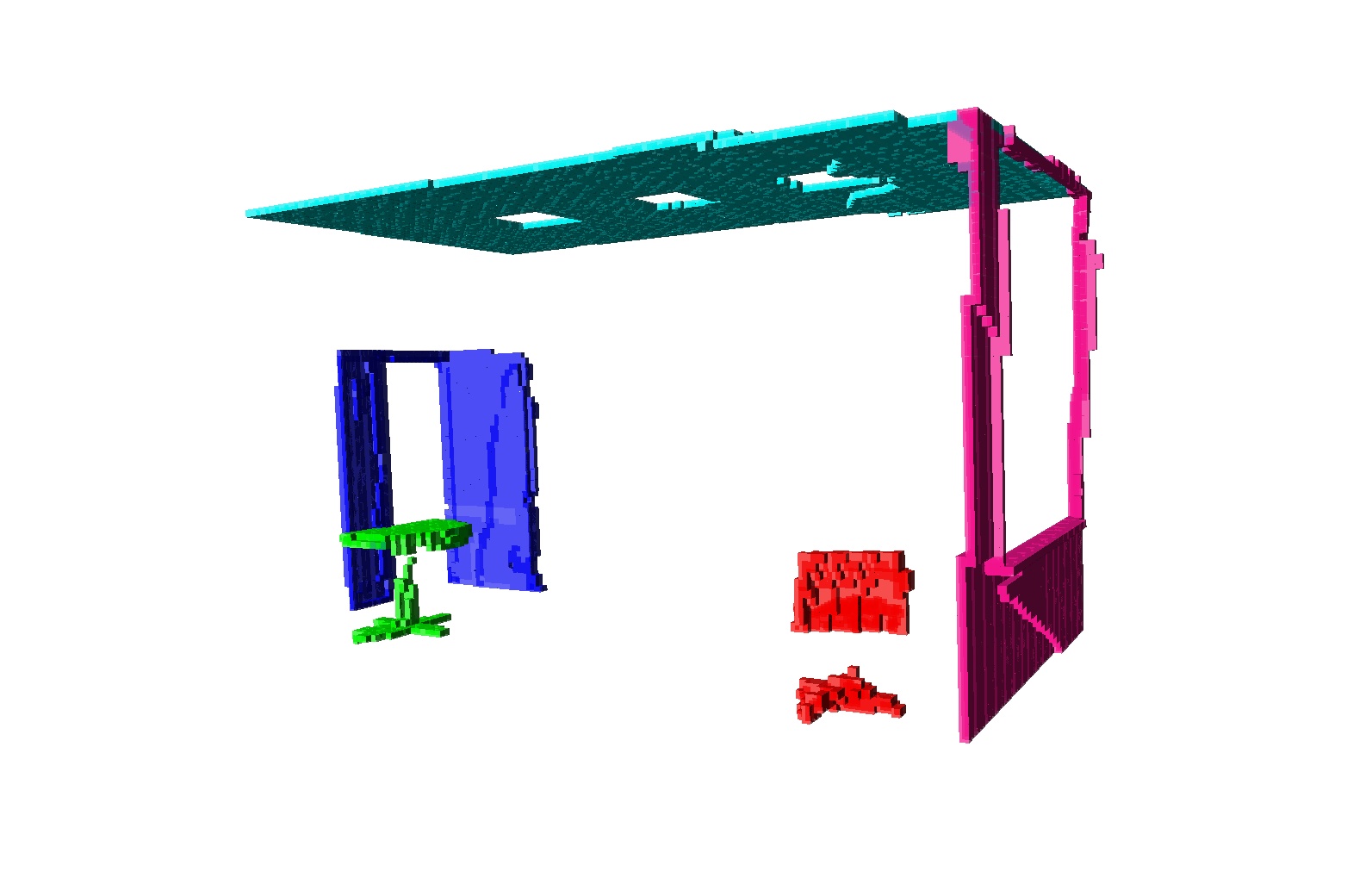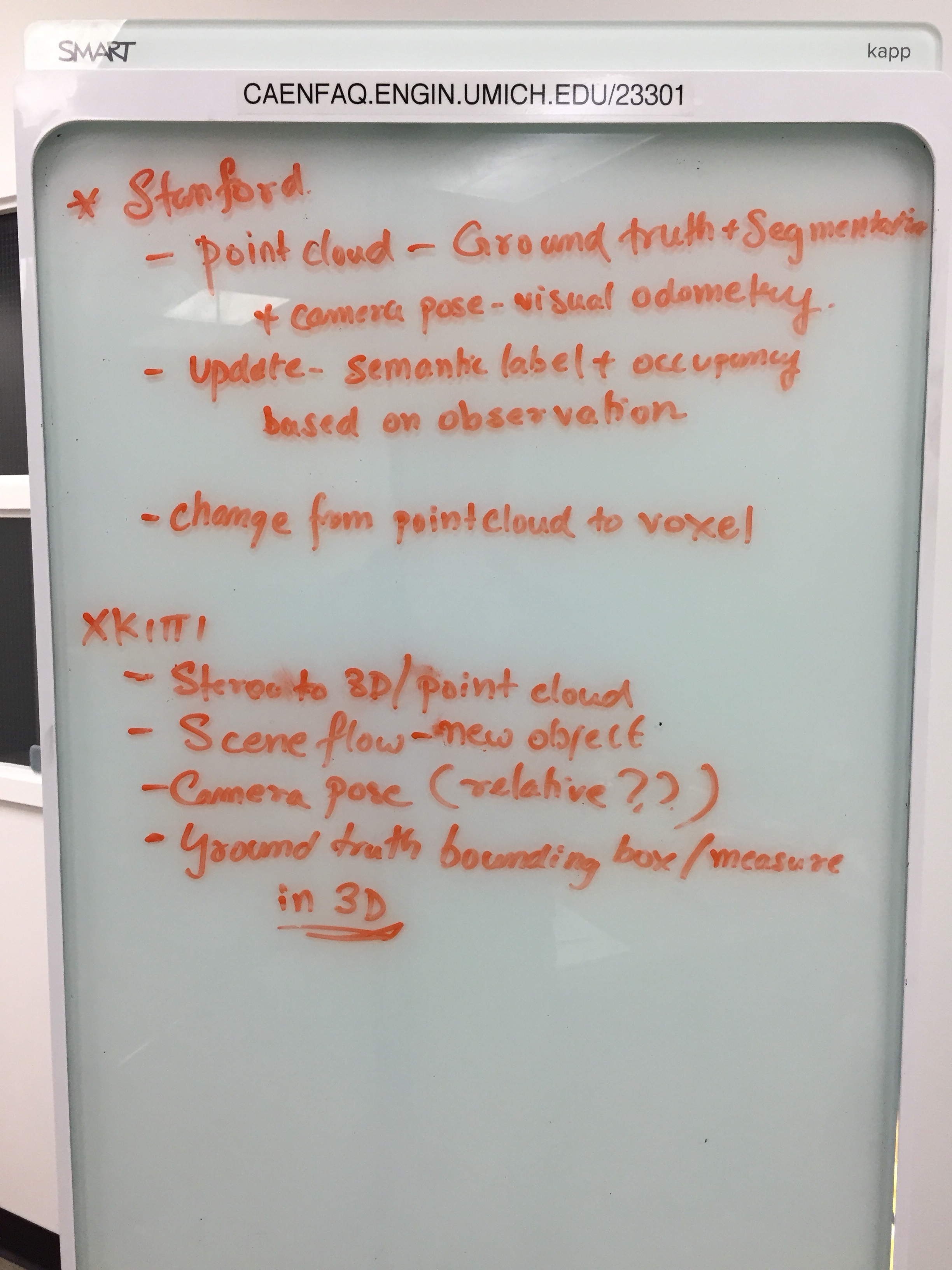-
Notifications
You must be signed in to change notification settings - Fork 21
Home
Lu Gan edited this page Mar 27, 2017
·
18 revisions
- Data Preparation
- (3/18) Choose a sequence of data with the most information and collect input information.
- (Done) Develop the project base code to extract information from our data.
- (Done) Define the data structures for our voxel-based 3D map presentation.
- Implement Voxel Map on the CPU
- (Done) Decide voxel map representation and develop basic operators for map update.
- (Done) Visualize the voxel semantic map using OpenSceneGraph or PCL.
- Implement Map Prediction
- (3/25) History-based Transition: Propagate the belief from the previous frame with scene flow.
- (4/1) Smoothing-based Transition: Apply smoothing model based on semantic distribution.
- Implement Measurement Update
- (3/25) Update voxel occupancy by measurement.
- (4/1) Update voxel semantics by measurement.
- Object Discovery and Post-processing (Optional)
- (4/1) Generate object proposals from semantic maps.
- (4/1) Enforce spatial consistency on the voxel map using CRF.
- Experiment Conduction and Work Summary
- (4/5) Merge all pieces of work together and conduct experiments on the semantic map result.
- (4/10) Write report and prepare presentation.
-
(Done, Lu) Implement SemanticOcTree and basic functions.
-
(Done, Lu) Implement Extra Information fusion, including color and semantics. Color fusion tested on Stanford 2D-3D-Semantics Dataset (2D-3D-S).


-
(Done, Lu) Implement Semantics fusion, and encode semantics into color for final visualization.
-
(Done, Lu) Test SemanticOcTree for five classes: chair, table, door, wall, board(celling), works fine.


Weekly Discussion:
